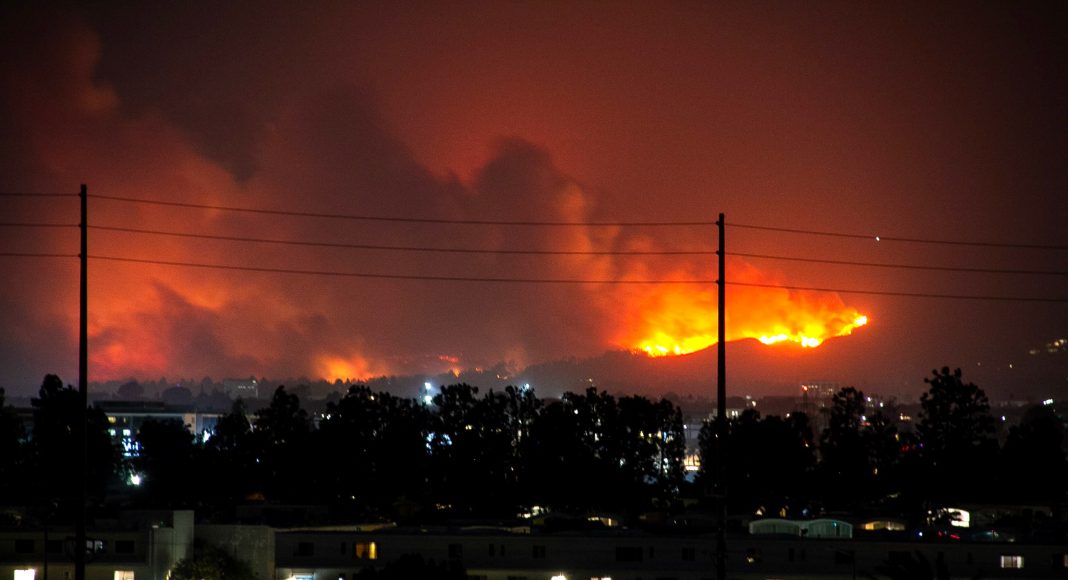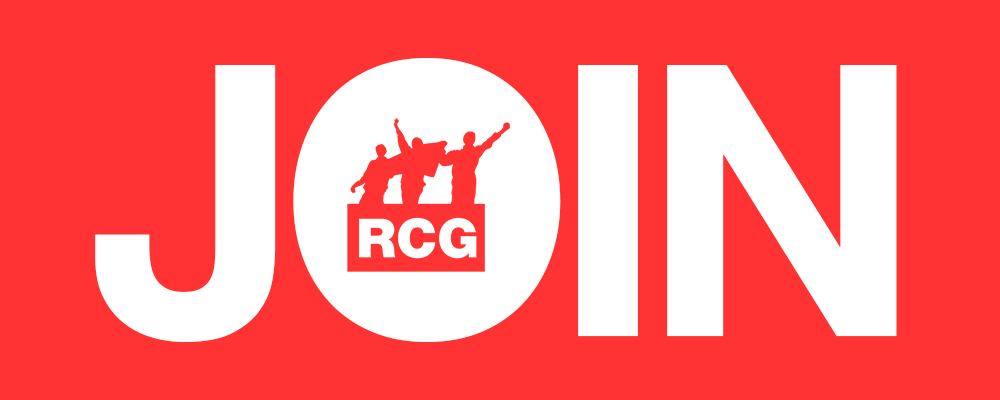Since 7 January 2025, wildfires in Los Angeles (LA), California have ravaged over 40,000 acres (over 160 square kilometres) of land, killed 27 people, forced over 200,000 people to evacuate and destroyed over 12,400 structures. As we go to press, the two largest fires, in Palisades and Eaton, have yet to be contained. They are projected to be the costliest in US history, estimated to have caused up to $150bn of damage. As residents pick up the remnants of their homes and the smoke clears, it is clear that self-interest fostered by capitalism significantly exacerbated a predictable disaster.
Predictable disaster
Wildfires in California are common events due to its climate. Mild, wet winters promote plant growth. During hot and dry summers, this vegetation dries out, creating abundant fuel for fires. On top of that, seasonal wind systems, such as the hot, dry and high-speed Santa Ana winds in southern California which occur in the autumn, rapidly spread fires when they start.
Wildfires are rare this early in the year, but during 2022 and 2023, LA experienced abnormally wet weather, leading to fast vegetation growth. This continued in 2024, with 12 inches of rain falling in a single 24-hour period in February 2024, the equivalent of a full year’s worth. The driest nine-month period to January on record followed. According to research in Environmental Research Letters, climate change has made hot and dry weather in California more likely to overlap with the Santa Ana winds season, extending the period that wildfires will typically occur. Previously seasonal, California wildfires are now becoming a perpetual problem.
The state’s negligence
Wildfires are not a surprise, yet the state remains criminally unprepared to warn or protect residents. Warning systems malfunctioned or misinformed residents of the time or area of disaster. Millions of residents throughout LA county received vague evacuation warnings with no indication of their proximity to the fires. Residents who did receive alerts got them 12 hours late due to failed relay stations. They then had no way of telling how the extent of the delay because the alerts had no timestamps. Furthermore, there was no way of telling what area was affected because fire map links would not open. Many other residents, for example in Altadena, California, received no official warning whatsoever, only fleeing when they smelt smoke in their vicinity.
Firefighters faced obstacle after obstacle, especially in the Palisades as the three available million-gallon tanks were emptied within hours. LA’s water system, which had only been designed to fight small scale fires spanning a few buildings, proved woefully inadequate to deal with the blazes. LA Fire Department (LAFD) Chief Kristin Crowley was clear that her firefighting force was underfunded and overburdened, responding to a 55% increase in call volume since 2010, while suffering a $17.6 million budget cut that removed essential staff, like mechanics. This rendered some firefighting apparatus useless. Thirty percent of LA’s wildfire crews are state prisoners who are paid $5.80-$10.24 a day and a further miserable $1 per hour when responding to active emergencies. They sometimes work 48-hour shifts, earning only $53.80 for the two days. The scale of the fires was so massive and firefighting force so inadequate that Mexican President Claudia Sheinbaum sent 72 firefighters from the Mexican National Forestry Commission and the civil relief corps to assist LA.
While the LAFD faced budget cuts, the LA Police Department’s (LAPD) budget jumped by $138m. The LAPD used this budget not to support evacuation efforts or to provide much needed supplies but to chase down ‘looters’. This supposed threat to private property was considered so significant that the California National Guard was tasked with looking for looters. Only 40 were arrested while the vast majority of the LA community and its firefighters had to rely on mutual aid and community organisations like All Power Books, a leftist book cooperative, and the National Day Labourer Organising Network, an organisation of immigrant workers, to provide evacuation shelters, emergency food supplies, snacks and bottled water.
Profit over people
While much mainstream media attention was given to wealthy Hollywood actors and directors displaced in the LA fires, little was said of California’s housing policies, which exacerbated the disaster. More than 1.4 million new housing units have been built in California since 1990 in high fire risk areas labelled ‘wildlife-urban interface areas’, where homes and infrastructure are located near forest or grasslands, natural ecosystems prone to wildfire. Here power lines, campfires, vehicles or equipment can accidentally spark wildfires; building in these areas brings both ignition source and fuel together. In a 2024 report, real estate data company CoreLogic identified nearly 250,000 houses in LA ‘with moderate or greater wildfire risk’. Despite this, politicians and developers have pushed ahead development, aware of the profit potential of building in LA’s rolling hills and canyons with panoramic views.
This disaster was so predictable that insurance companies like State Farm had stopped renewing fire policies in neighbourhoods like the Palisades just months before. Between 2020 and 2022, 2.8 million California homeowners were denied home insurance. The state then compelled insurance companies to offer cover, but as these were four times as expensive, many could not afford the cover. As the risk of wildfires increases due to climate change, more and more home insurance companies are abandoning California as their profits are threatened. It is the working-class communities of LA that must remain and face the increasing dangers to their homes and livelihoods.
Vultures in the distance
As LA begins the process of rebuilding, working class communities are already voicing concerns about the types of homes that will be prioritised, predicting new homes will be marketed towards even more affluent residents and forcing many long-time working-class residents to leave the area. Broader issues, like the greater share of California’s water being owned by one billionaire family, the Resnicks, and being used to supply their juice and bottled water companies, point to the deeper challenges the working class of California faces. The working class must wrest control of their resources from the capitalist ruling class to truly plan and build for a future that is sure to be rife with many worse climate catastrophes.
Soma Kisan
FIGHT RACISM! FIGHT IMPERIALISM! 304 February/March 2025




